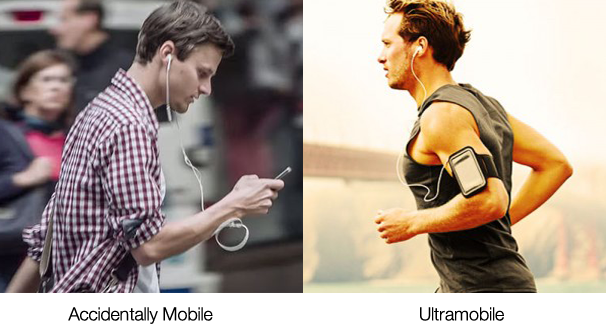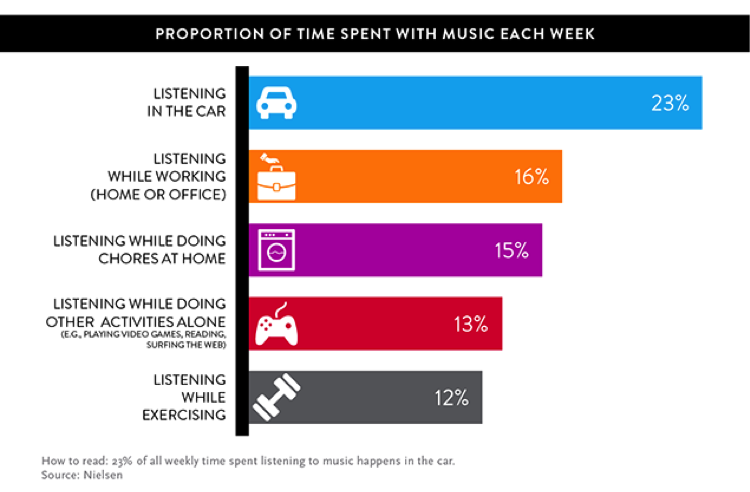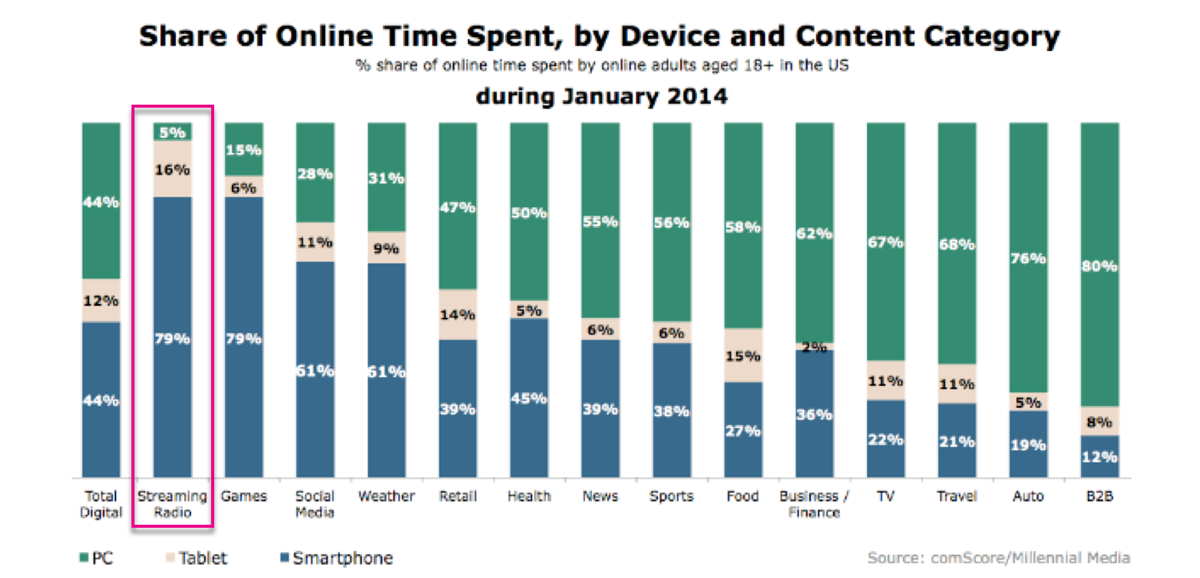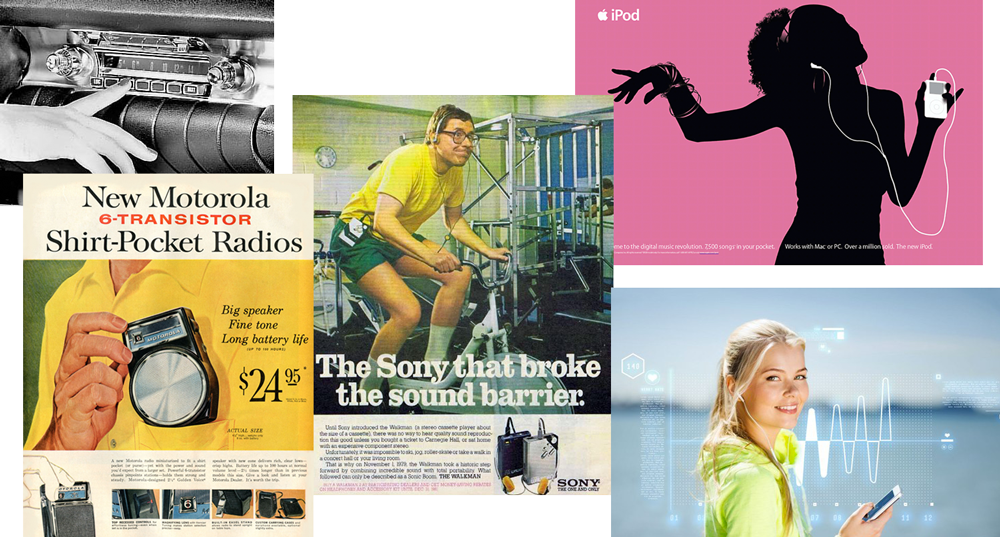Mobile devices have changed how and when consumers interact with digital media. The rapid proliferation of smartphones in particular has both created new consumption habits for digital media and diverted consumer attention away from traditional media. But there are really two definitions of mobile media. One definition refers to media consumed visually on a mobile device. Another definition, Ultramobile, refers to media consumed while people are actually in motion or multi-tasking.
Visual Mobile is Single Tasking Mobile
 The broad definition assumes that the most important factor is the device. Specifically, the size of the screen and access to a wireless data network are presumed to be the key differences from a desktop experience. This construct assumes the consumer is looking at and touching the screen when consuming media. Visual media consumption is a primary and singular task.
The broad definition assumes that the most important factor is the device. Specifically, the size of the screen and access to a wireless data network are presumed to be the key differences from a desktop experience. This construct assumes the consumer is looking at and touching the screen when consuming media. Visual media consumption is a primary and singular task.
Visual Mobile does not lend itself to “whatever you are doing” media consumption. Reading an article in a news app, playing a game app, checking a social media feed and watching a video all require visual attention. This makes it awkward to consume media when you actually need your eyes for another mobile task such as driving, walking, exercising or working. We do frequently observe people trying to couple activities that require visual attention. We call these consumers accidentally mobile. Results may vary.
Ultramobile is Multi-tasking Mobile
When consumers are in motion, audio is most likely to be the media of choice. Audio is the only media that can be safely consumed while driving a car or walking down the street and is even convenient when conducting high function activities such as work and exercise. If you want to reach consumers when engaged in these ultramobile activities, visual communication is ineffective. By contrast, audio can capture attention even when consumers are in motion.
Data from Nielsen and Clear Voice Research in 2014 suggests that the majority of audio media consumption occurs while multi-tasking. This is when visual attention is hardest to capture. Even when the ad loads on the screen, the consumer may well have their eyes diverted elsewhere. No wonder so many advertisers are worried about ad viewability on mobile.
Engage Ultramobile Consumers Through Audio
When marketers want to reach ultramobile consumers, ad-supported Internet radio and music streaming services provide the best option. Audio publishers now serve more than 160 million consumers monthly and a comScore / Millennial Media study concluded that 95% of their time is on mobile. In addition, eMarketer reports that mobile consumers spend 12% of all their digital consumption time listening to audio – remarkably, this is more than double the time spent on Facebook. Standard digital audio ads can capture attention and deliver awareness for people in motion, but fall short on engagement because they rely on touch for interaction and touch requires visual attention. In the words of the great Mohammed Ali, “You cannot hit [touch] what you cannot see.”

Audio is the Quintessential Mobile Media
 The conclusion is simple. Audio is the quintessential mobile content consumption media. Since the first car radio launched in 1930 and continuing through the transistor radio, Sony Walkman, iPod, and smartphone audio has remained the ultramobile media leader. And, audio is the only ad format truly accessible to mobile consumers regardless of their activity at the moment the ad is served. With the advent of Interactive Audio Ads, users can now respond by voice making audio the quintessential mobile content interaction media as well. See an example here.
The conclusion is simple. Audio is the quintessential mobile content consumption media. Since the first car radio launched in 1930 and continuing through the transistor radio, Sony Walkman, iPod, and smartphone audio has remained the ultramobile media leader. And, audio is the only ad format truly accessible to mobile consumers regardless of their activity at the moment the ad is served. With the advent of Interactive Audio Ads, users can now respond by voice making audio the quintessential mobile content interaction media as well. See an example here.
Related Posts
Internet Radio’s Viewability Problem
Mobile Marketer: “[Internet radio] advertisers mistakenly focus on graphics and touch engagement”
How Voice Interaction Increases Internet Radio Response Rates (Infographic)
